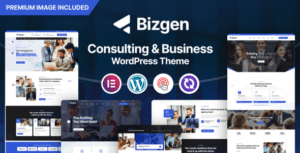Improving Click-Through Rate (CTR) is a crucial aspect of any successful online marketing strategy. CTR measures the effectiveness of your digital content by calculating the percentage of users who click on a specific link out of the total number of users who view it.
A high CTR not only indicates that your content is engaging and relevant but also enhances your overall return on investment by driving more traffic to your website, increasing conversions, and ultimately boosting your business performance.
In this guide, we will explore a range of useful tips and strategies to help you improve your CTR, ensuring that your marketing efforts are both impactful and efficient. So, without further ado, let’s dig deeper.
Importance of CTR in Digital Marketing
Click-through rate (CTR) is a critical metric in digital marketing that measures the effectiveness of online advertising and email campaigns. It is calculated by dividing the number of clicks an ad or link receives by the number of times it is shown (impressions), expressed as a percentage. Here’s why CTR is so important in digital marketing.
i. Measuring engagement
CTR directly reflects how engaging an ad or email is to its audience. A high CTR indicates that the content resonates well with viewers, prompting them to take action. It helps marketers understand if their message, offer, or call-to-action is relevant to their target audience. Poor CTRs can indicate a need for better targeting or content adjustments.
ii. Performance optimization
Marketers often use CTR to compare the performance of different ads, email subject lines, or landing pages in A/B tests. Higher CTRs indicate more effective versions. By monitoring and optimizing for higher CTR, marketers can improve the return on investment (ROI) for their campaigns. Ads with higher CTRs typically cost less per click and can lead to more conversions.
iii. Quality score in paid advertising
CTR impacts ad costs significantly. Platforms like Google Ads use CTR as a component of their Quality Score, which affects ad placement and cost-per-click (CPC). Ads with higher CTRs usually achieve better positions and lower costs. High CTRs are often rewarded by ad algorithms, which prioritize showing ads that are more likely to be clicked, enhancing visibility and effectiveness.
iv. Campaign effectiveness
For lead generation campaigns, CTR is crucial in assessing how well the ad or email is driving traffic to landing pages where conversions can happen. In e-commerce, a high CTR often leads to increased sales as more interested customers visit product pages.
v. Benchmarking and goal setting
CTR provides a benchmark for campaign performance, helping marketers set realistic goals and measure progress over time. Comparing CTRs across different campaigns and channels allows for better strategic planning and resource allocation.
vi. Audience insights
CTR provides valuable insights into audience behavior and preferences. By analyzing which ads or content receive higher CTRs, marketers can better understand what appeals to their target audience. This data can inform future content creation and campaign strategies to better align with audience interests and needs.
vii. Ad relevance and quality
High CTRs typically indicate that ads are relevant and of high quality. This relevance is crucial for maintaining a positive brand image and ensuring that marketing efforts are not perceived as intrusive or spammy. Relevance and quality in advertising foster trust and loyalty among consumers.
viii. Budget allocation
CTR helps marketers make informed decisions about budget allocation. Campaigns with higher CTRs often yield better results, making them worthy of increased investment. Conversely, campaigns with lower CTRs may require a review and optimization before further budget is allocated.
ix. Competitive analysis
CTR can be used as a benchmark to evaluate how a campaign is performing relative to competitors. By comparing CTRs, marketers can gain insights into their competitive position in the market and adjust their strategies to improve performance.
x. Improving user experience
Analyzing CTR can highlight areas where user experience may need improvement. For instance, if an ad has a high impression count but a low CTR, it may indicate that the landing page or ad content is not compelling enough. Enhancing these elements can lead to a better overall user experience.
xi. Enhancing conversion rates
A higher CTR often correlates with higher conversion rates, as more users who click on ads are likely to be interested in the product or service being offered. By focusing on improving CTR, marketers can indirectly boost conversion rates and overall campaign effectiveness.
xii. Tracking marketing funnel progress
CTR is an essential metric for tracking progress through the marketing funnel. It helps marketers understand how effectively ads are moving prospects from the awareness stage to the consideration stage, providing a clear view of funnel efficiency.
xiii. Real-time feedback
CTR offers real-time feedback on the performance of marketing campaigns. This immediate insight allows marketers to make swift adjustments to their strategies, ensuring that campaigns remain effective and responsive to audience behavior.
xiv. Influencing organic search performance
High CTRs on paid ads can positively influence organic search performance. When users frequently click on paid ads, it can boost overall site traffic and engagement, which may improve organic search rankings over time.
Top 10 Useful Tips on How to Improve CTR
Improving Click-Through Rate (CTR) is crucial for the success of online campaigns, whether it’s for websites, emails, or advertisements. Here are ten useful tips to help boost your CTR.
1. Craft compelling headlines
Creating irresistible headlines is essential. Use numbers and list formats to grab attention, such as “Top 10 Tips for…”. Power words like “Ultimate,” “Proven,” and “Effective” can enhance appeal. Asking questions in headlines can also pique curiosity and engage readers more effectively.
2. Optimize meta descriptions
Your meta descriptions should be descriptive and concise, summarizing the content accurately within 150-160 characters. Including a call to action (CTA) like “Learn more” or “Get started” can encourage more clicks from search engine results pages.
3. Utilize rich snippets
Implementing structured data can help your content stand out in search results with rich snippets, providing additional information like ratings, reviews, and prices directly in the search listing. This can make your link more attractive and relevant to searchers.
4. Improve Ad Copy
For paid advertising, ensure your ad copy is compelling and relevant. Highlight unique selling points and benefits, use emotional triggers, and always include a clear CTA to guide users on what action to take next.
5. Enhance visual appeal
Use high-quality images, infographics, and videos in your content. Visual elements can draw attention and increase engagement. Ensure that your visuals are relevant to the content and optimized for quick loading.
6. Test different CTAs
Experiment with various call-to-action phrases and placements. Sometimes a simple change from “Click here” to “Discover now” can make a significant difference in engagement. A/B testing different CTAs can help determine what resonates best with your audience.
7. Focus on user intent
Understand what your audience is searching for and tailor your content to meet those needs. Providing valuable, relevant information that answers their queries can increase the likelihood of them clicking through.
8. Optimize for mobile
Ensure your website and emails are mobile-friendly. With a significant amount of traffic coming from mobile devices, a responsive design can improve the user experience and increase CTR.
9. Improve Page Load Speed
Slow-loading pages can deter users from clicking through. Optimize your website’s performance to ensure quick load times. Tools like Google PageSpeed Insights can help identify areas for improvement.
10. Leverage social proof
Incorporate reviews, testimonials, and user-generated content into your pages and ads. Social proof can build trust and credibility, encouraging more users to click through.
Conclusion
Optimizing your Click-Through Rate (CTR) is paramount for driving the success of your online marketing endeavors. By incorporating the strategies outlined in this guide—such as crafting attention-grabbing headlines, utilizing persuasive calls-to-action, leveraging captivating visuals, and conducting thorough A/B testing—you can effectively increase user engagement and drive more traffic to your website.
Remember to continuously monitor and analyze your CTR metrics to refine your approach and stay ahead of the competition. With dedication and strategic implementation, you can elevate your CTR, enhance your digital presence, and achieve your marketing objectives with greater efficiency and effectiveness.








